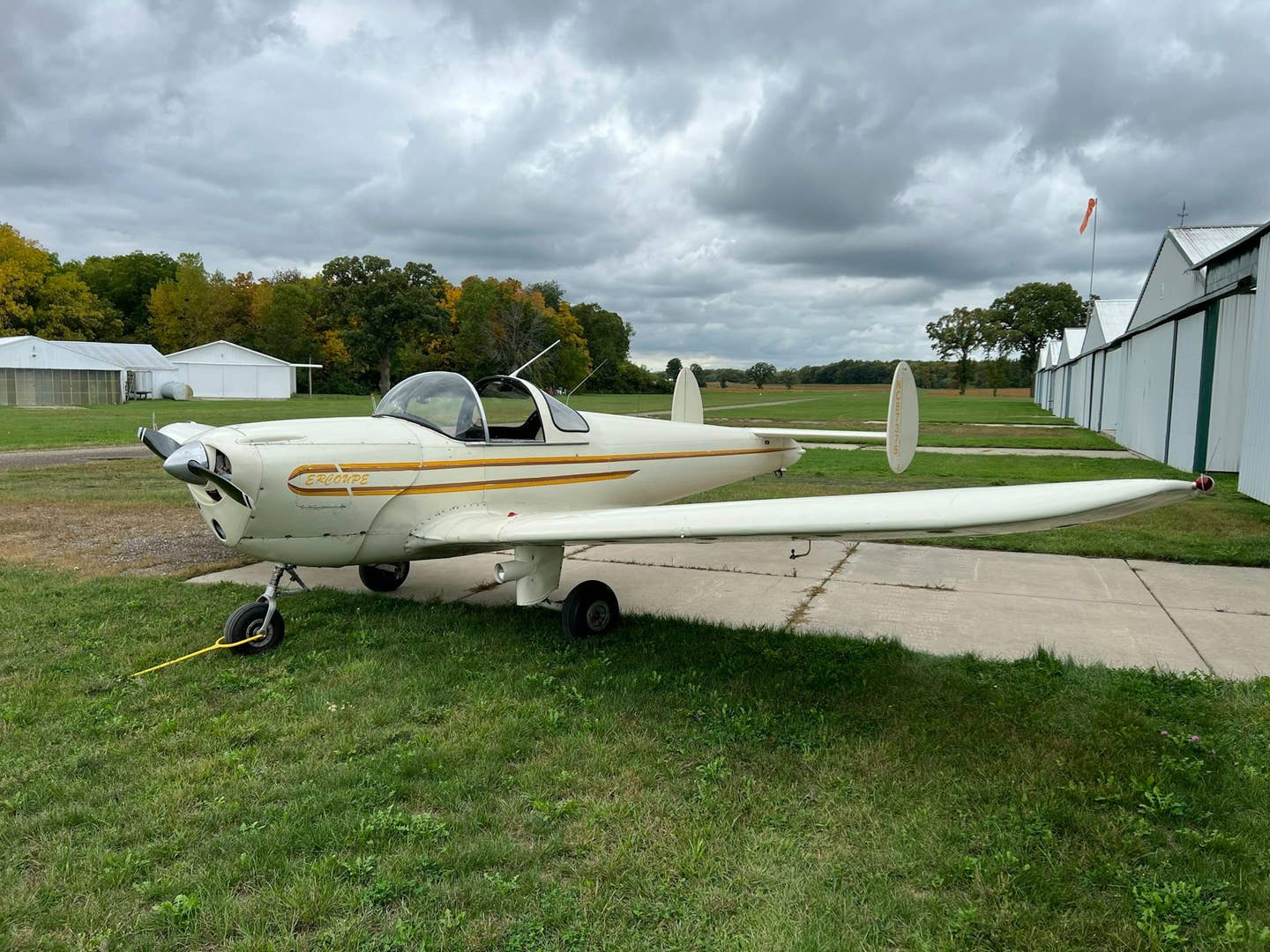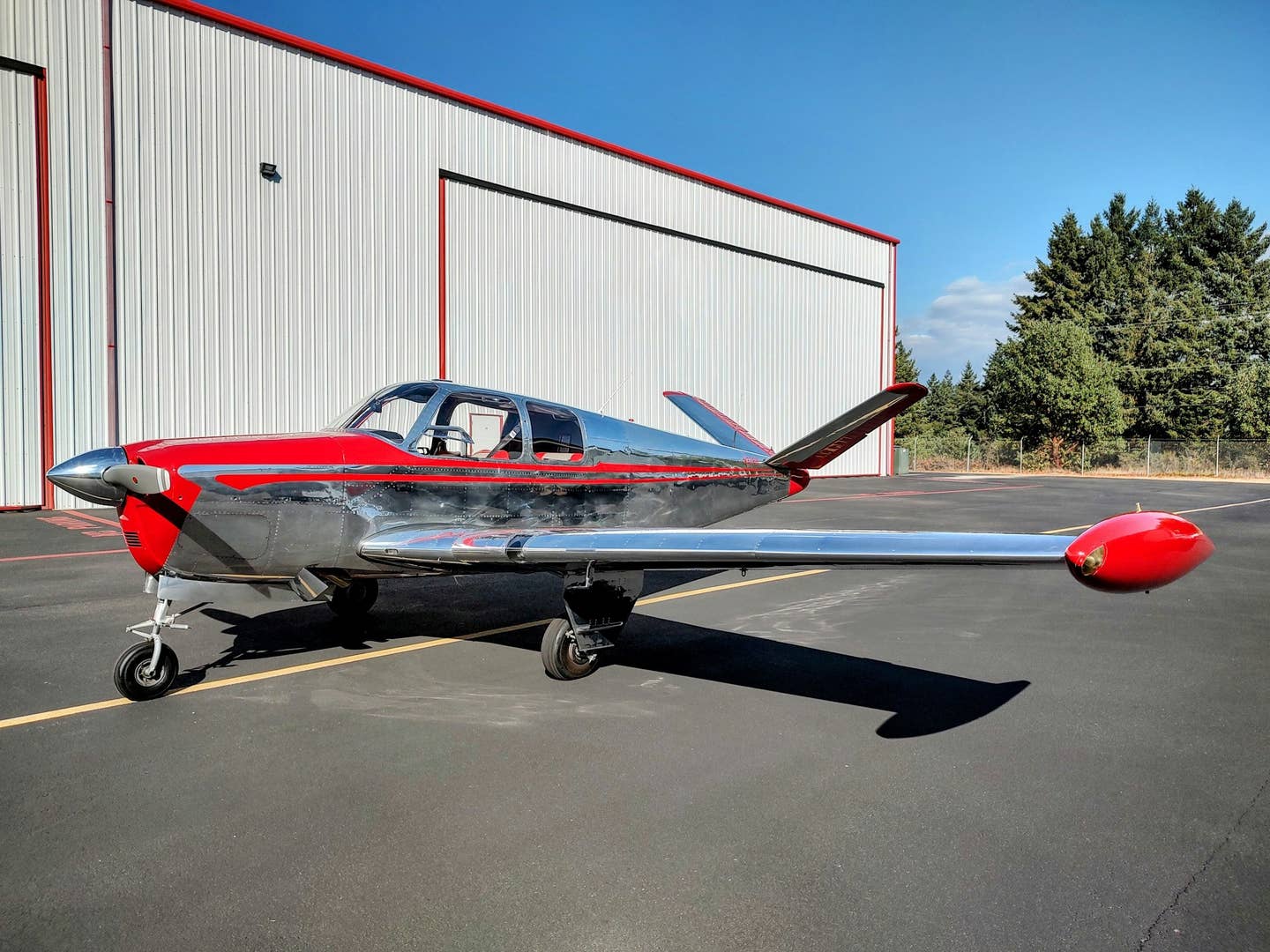Six Light Single-Engine Planes They Totally Need to Bring Back!
Sometimes planes fall from production status despite being much beloved. Here are several that we hereby demand they put back into production.
Airplanes are sexy; no one would argue that point, at least not in these pages! But being in the airplane manufacturing business? Extremely unromantic. It's expensive, there's limited profit potential, there's liability out the ying-yang, and when you think about it, the market is a tiny one. Hence, airplanes come and go. But in our little neck of the aviation woods, where light planes rule, the stars are well known, and even many of those bright lights are no longer being made. And there are other, long-gone planes we love, one of which we think is so cool we thought it worthy of consideration even in this shortlist of planes they need to bring back (and soon!), even if that is very unlikely to ever happen.
AA-5B Tiger
There's no top of this list of planes they totally need to bring back, but if there were, the Tiger would be right up there. The four-seat, all-metal, roll-back canopy low-winger was one of the greatest accomplishments of the late Jim Bede's aircraft design legacy. It was revolutionary---its unassuming looks fool people into thinking it's plain vanilla, but it's got a free-castoring nosewheel, bonded wing skins and lightweight, expanded-aluminum airframe structures. And it flew great. Introduced by American Aviation of Yankee fame, the AA-5 first flew in the summer of 1970 and had its first keys tossed to a customer the next year, but the first model called the Tiger hit the airways a few years later. By then, it had gotten the correct engine, the 180-hp Lycoming, which gave it the kind of Skylane-level cruise speeds and sprightly climb performance that made owners fall in love with it. I flew one for a few years. It might be my favorite airplane ever. Nostalgia, perhaps, but it's a great ride. Surprisingly roomy, visibility to die for, low maintenance costs and a great instrument platform. No fewer than five different companies have signed up to build the Tiger after their predecessors shut the hangar doors. It's currently not in production, and with 3,282 built over 35 years (with several long pauses along the way), there really aren't that many out there. Bring it back!
Beechcraft V-35 V-Tail Bonanza
Some Bonanza fanatics think that there's no such thing as a Bonanza without a V-tail. The original Bonanza was, indeed, a V-tail model. Introduced in 1947, it was light, fast, modern and easy to fly and is arguably the most revolutionary light plane in aviation history. And for the next decade and a half, if you wanted a Beechcraft Bonanza (and we are not counting the Twin Bonanza), the V-tailed Model 35 was the sole menu item. Straight-tail "Bonanzas" started showing up in the early '60s, and there are so many arguments to be made as to why that configuration is an improvement over the V-tail. Models 33 and 36 are each more stable than the forked-tailed version. They have better safety records, there are fewer structural problems with their tails, and the tendency to Dutch roll is gone. But the V-35 is just so beautiful. It handles like a bobsled on a smooth and fast track, it's beautifully appointed and, from an aesthetic perspective, it's just the coolest. A real work of art in the hangar. But it hasn't been around since 1982, when the last one rolled off the line from Wichita's east-side airplane maker. Don't expect a resurrection anytime soon. Beech built an enormous amount of Bonanzas over the decades, more than 10,000, in fact, and many are still flying. But wouldn't a brand-new Bonanza be the best?
Varga Kachina
Here's one you might not be familiar with, and if that's the case, it's certainly understandable. Between the plane's introduction in 1948 and its last hurrah in 1982, fewer than 200 of the comely little tandem two-seaters hit the sky, and most of those were built between 1975 and 1982. A lot of them are still flying, probably right around 100 of them, and it's easy to see why. The thing is just the cutest little bug of a plane you've ever seen. At the same time, it's also got this strangely military feel to it, probably because it resembles in general configuration, down to its straight-standing tail, the Beech T-34 Mentor that, make no mistake, is way more airplane than the Kachina. That said, the little Varga is a joy to fly, and I flew one years ago. On its not-so-little 150 hp or 180 hp Lycoming engine, it climbs great, and the visibility is spectacular, which is handy for spotting make-believe bogeys at your six, and the handling is beautifully harmonized. Fast, it is not. But, c'mon, is fast what this kind of airplane is all about? Besides, when they bring it back, which they most assuredly will not do any time soon, they will certainly improve the aerodynamics and make it aerobatic, as well. We can dream, can't we?
Cessna 177 Cardinal
When Cessna brought back its greatly abbreviated lineup of single-engine planes in the mid-1990s after a 10-year hiatus, perhaps the omission that most grieved enthusiasts was that of the Cardinal, which is arguably one of the, if not the, most beautiful Cessnas ever built. Introduced in the late '60s, the Cardinal was intended by Cessna as a replacement for the 172, which sounds like a bad joke today. It didn't work, and Cessna built many thousands of 172s after that, but by gum, the Cardinal was much beloved by those who owned and flew them. Don't get the wrong idea. It was far from a niche offering. Cessna built more than 4,000 in the decade following the type's introduction in 1968. And it was cool, with its two major features being the cantilever high wing and the setback of said wing, both of which allowed easy access to the seating area. And Cessna did a great job with the interior as well. It was comfortable and had terrific visibility, but it wasn't fast, with a cruise speed of around 120-125 knots. Even the retractable-gear 177RG isn't much faster than that. And if you note the Cardinal's passing from production in 1978, seven years before the company pulled the plug on the rest of its singles, you might get the idea that it wasn't selling well. Correct. Though Cessna did, indeed, get a lot of low-pressure urging to put the plane back into production, the all-metal model wasn't cheap to build---cantilever-wing designs tend to require lots of production hours compared to their strut-braced brethren. And in a way, Cessna almost did bring back the Cardinal, or at least a Cardinal wannabe, when it floated the idea of a high-winged, no-strut, all-composite plane it called the Next Generation Piston (NGP). It never took off, production-wise, and as far as beauty is concerned, it couldn't hold a candle to its sheet-metal inspiration.
Cessna 210
Early 210s were a work in progress, but once they got the cantilever wing, the classic Centurion body and the big motor, they were and are simply an outstanding aircraft. If Cessna had modernized the 210 and maybe even thrown in a chute to appeal to the prospects who buy Cirrus SR22s, might it have been a contender instead of sitting out the last 36 years in retirement? Are you kidding---of course it could have been a major player. The 210 has it all. It has a prodigious payload, terrific true airspeeds, the turbo model is a beast, and the plane is both capable and a pretty one. With its updated glass panel, as so many existing 210s are sporting today, who wouldn't have wanted one? Yes, it would have been expensive. At the same time, isn't it in the same class as the SR22, but with a couple more seats, or the Beechcraft G36 Bonanza? Instead of resurrecting the Centurion, Cessna opted for buying a composite airplane program, the Columbia 350/400, which it probably saw as a cheaper-to-build airplane and one that better appealed to modern sensibilities. I don't know. I've got a good bit of time in a 210, and it's one of the very best airplanes I've ever flown. Let's bring it back.
Commander 112/114
Of all the planes featured here, the Commander, and perhaps the Tiger, are the ones most likely to make it back to production, though neither's chances are all that great. Like the Tiger, the Commander, launched by Rockwell Aircraft at the dawn of the '70s, was ultimately produced in decent numbers. Around 1,200 of the four-seaters made it out the factory doors. Like the Cardinal, the Commander incorporated not new ideas so much as ideas that few existing singles were making use of. In the case of the Rockwell single, this feature was cabin size. It's a roomy plane from an era when rubbing shoulders with other pilots was a literal expression. Book numbers for the Commanders are among the most ambitious in aviation, but with its 260 hp (some were turbocharged), the roomy, cruciform-tailed Commander could do around 150 knots at cruise. Early models were payload limited---it's fuel or passengers; you decide---but the aesthetics and quality work inside and out were among the best in the biz. A very solid cross-country and instrument platform, the Commander was good at doing just what it was designed to do, though everyone wished it was about 15 knots faster. With the new production ones we're imagining as we write, we are certain that this concern will be addressed.

Subscribe to Our Newsletter
Get the latest Plane & Pilot Magazine stories delivered directly to your inbox






